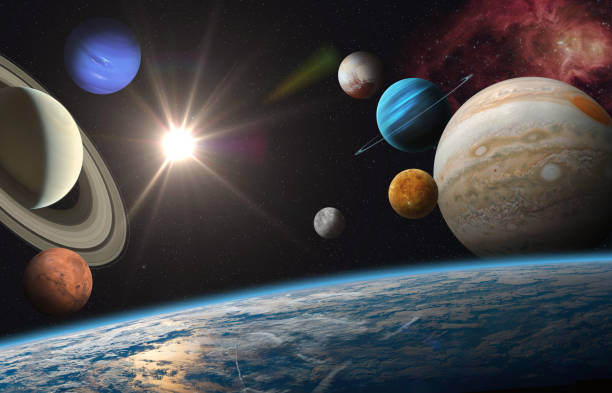The Solar System, An Introduction
The solar system is a vast and intricate system that includes the sun, eight planets, dwarf planets, moons, and various other objects. It is located in the Milky Way galaxy and is estimated to be about 4.6 billion years old. In this blog, we will explore the different components of the solar system and their fascinating characteristics.
The Sun: At the center of the solar system is the sun. It is a massive, hot ball of gas that is about 109 times larger than Earth. The sun is the source of all the energy that sustains life on Earth. It is made up of mostly hydrogen and helium, and it generates energy through the process of nuclear fusion. The temperature at the core of the sun is estimated to be about 27 million degrees Fahrenheit.
The Planets: The solar system has eight planets, which are divided into two categories: terrestrial and gas giants.
Terrestrial planets: There are four terrestrial planets in the solar system: Mercury, Venus, Earth, and Mars. These planets are called terrestrial because they are composed of rock and metal. They are also relatively small and have solid surfaces.
Mercury is the closest planet to the sun and is the smallest planet in the solar system. It is about 3,031 miles in diameter and has no atmosphere.
Venus is the second planet from the sun and is about the same size as Earth. It has a thick atmosphere that is composed of carbon dioxide and sulfuric acid.
Earth is the third planet from the sun and is the only planet known to have life. It has a diverse range of ecosystems and is the largest of the terrestrial planets.
Mars is the fourth planet from the sun and is known as the "Red Planet" due to its reddish appearance. It has a thin atmosphere that is composed of carbon dioxide and is home to the largest volcano in the solar system, Olympus Mons.
Gas Giants: There are four gas giant planets in the solar system: Jupiter, Saturn, Uranus, and Neptune. These planets are called gas giants because they are composed of mostly hydrogen and helium and do not have solid surfaces.
Jupiter is the largest planet in the solar system and is known for its large, red spot. It has more than 60 moons and is surrounded by a system of rings.
Saturn is the second-largest planet in the solar system and is known for its beautiful rings. It has more than 80 moons and is composed of mostly hydrogen and helium.
Uranus is the seventh planet from the sun and is tilted on its side, making its axis of rotation nearly parallel to the plane of the solar system. It has a system of rings and more than 20 moons.
Neptune is the eighth planet from the sun and is the farthest planet from the sun. It is similar in size and composition to Uranus and has a system of rings and more than 10 moons.
Dwarf Planets: In addition to the eight planets, there are also five recognized dwarf planets in the solar system: Ceres, Pluto, Haumea, Makemake, and Eris. These objects are smaller than the eight planets and are not considered planets because they have not cleared their orbit of debris.
Ceres is the largest object in the asteroid belt and is located between Mars and Jupiter.
Pluto was once considered the ninth planet in the solar system but was reclassified as a dwarf planet in 2006. It is located in the Kuiper Belt, a region of the solar system beyond the orbit of Neptune.
Haumea, Makemake, and Eris are located in the Kuiper Belt and are similar in size to Pluto.
Moons: There are more than 200 moons in the solar system, with the majority orbiting the gas giants. The largest moon in the Solar System is Titan, the moon of the ringed beauty, Saturn. Although there are many undiscovered Moons out there, Titan is by far the largest.
Asteroids:
Asteroids are small, rocky bodies that orbit the sun and are found throughout the solar system. They range in size from small pebbles to large boulders, with the largest asteroid, Ceres, being about 590 miles in diameter. Asteroids are remnants from the early solar system, and studying them can provide insights into the formation and evolution of the solar system.
Although there are many other celestial bodies in our solar system, these might be the major ones. Many black holes are also found in our solar system and only 20 of them have been proven to be there! Scientists estimate that there might be more than 10,000 hidden blackholes in the solar system alone!
To learn more about different celestial bodies, visit our blog!

Comments
Post a Comment
Follow for more! If you have any doubts or suggestions, let us know!